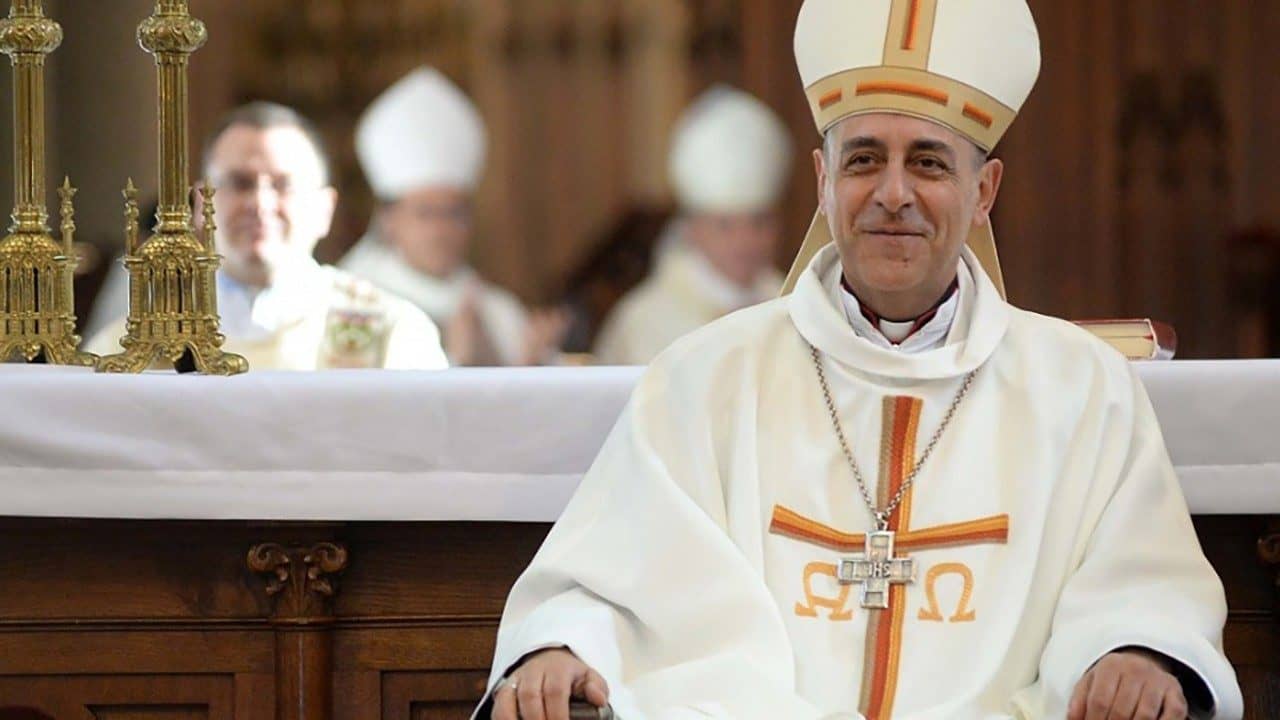WASHINGTON, D.C. – E.J. Dionne of the Washington Post is known as quite a Pope Francis fan and Ross Douthat of the New York Times as one of the pontiff’s more trenchant critics, so when the two of them came together Wednesday night at the Catholic University of America, their interaction was expected to create some of the evening’s most compelling drama.
(Dionne joked that on his way into CUA’s Heritage Hall, he came across a poster promoting a discussion of the book Why Liberalism Failed by Patrick Deneen, saying: “My first reaction was either I’m in the wrong meeting, or this thing is more biased than I thought!”)
Dionne and Douthat were joined on a panel sponsored by CUA’s Institute for Human Ecology by myself and Adelaide Mena (“Addie” to friends), a young journalist known, among other things, for her work with the Catholic News Agency.
Predictably, Douthat focused in part on Francis’s cautious opening to Communion for divorced and civilly remarried Catholics in the 2016 document Amoris Laetitia, arguing, as he does in his recent book To Change the Church, that Francis has mired the Church in stale 1960s- and 70s-era debates originating in German Catholicism, squandering potential for a more creative engagement with modernity.
Dionne, on the other hand, insisted that the real Francis legacy is to be found in his ardent defense of the poor and his challenge to 21st century forms of globalization that seem to cement steep income inequalities and other forms of marginalization. While acknowledging that previous popes made similar points, Dionne stressed that as the first pontiff from the global south, Francis brings a special passion and sense of priority to the cause.
Given the protagonists, the discussion was articulate and engaging, although the terrain was familiar to anyone who’s been following the media back-and-forth on Francis over the last five years.
One of the evening’s more original moments, however, came when a young man rose to question the panel about our views of “integralism,” a social theory that originated in 19th century Europe as a reaction against the rise of both socialism and capitalism, arguing that the social order must be based on humanity’s ultimate supernatural end. In most forms, it defends social differentiation and hierarchy with co-operation between social classes, in an effort to transcend conflicts between social and economic groups.
Mena made the interesting point that there’s a budding interest these days in integralism among a certain subset of young, traditionalist-leaning Catholics, who sense there’s something off not merely about the current political dynamic of left v. right but the entire “liberal” order, understood in its classic sense – political democracy, economic free markets and individual rights.
In a fascinating, and category-bending, aside, Mena said that some of these young traditionalists are actually more at home under Francis than John Paul II and Benedict XVI, precisely because his critique of capitalism and the whole liberal order strikes them as more sweeping than the previous two pontiffs.
Douthat echoed the point, explaining that this integralist sentiment tends to percolate in an internet realm known as “Weird Catholic Twitter,” where various counter-cultural alternative voices engage in a fairly sprawling and often ironic exchange. Here’s a typical recent post: “Weird Catholic twitter currently negotiating with Satan to worship him, provided they can own the capitalists in the process.”
Later, after the panel was over, Douthat explained that he sees a generational difference with Catholics younger than him (he’s 38), for whom the liberal order doesn’t mean WWII, the post-war economic boom, and construction of a unified Europe. Instead, it means the Iraq war, the economic collapse of 2008, and losing many of the cultural battles in which Catholics are most invested.
As opposed to older Catholic conservatives who want to save liberalism, Douthat said, these younger Catholics are seeking root-and-branch alternatives.
I got a taste of that when the 20-something student who asked the question approached me afterwards and seemed quite enthusiastic when I suggested he might want to take a look at the antecedents of modern Catholic social teaching in the papacies of Gregory XVI and Pius IX, since that’s when the Catholic rejection of modernism tout court reached a zenith. There’s also an intersection between this anti-modern thrust and today’s environmental movement; some modern Catholic ecologists see Gregory XVI as a patron saint, actually, among other things for his rejection of locomotive trains in the Papal States.
(Reassuringly, the young man agreed that going back literally to banning trains probably isn’t the answer!)
Douthat granted that the numbers of these young traditionalists-cum-integralists are quite small, and suggested that at least for now, they’re probably of less interest to journalists trying to tell the broad Catholic story than to academics trying to think about who’s going to make up the next generation of graduate students in their theology, philosophy and political science departments.
After all, Douthat said, these younger Catholics are highly motivated and they’re comfortable with theory, meaning they’re precisely the sort of people who may be drawn to graduate programs in those disciplines.
It remains to be seen whether “weird Catholic twitter” has staying power, however small, or if it’s just a passing fancy.
In the meantime, it’s at least a reminder that when you increase the magnification, things in the Catholic Church are always more complicated than they appear. Just as not everyone on what’s stereotypically considered the Catholic “left” is necessarily a Francis fan, not everyone on what’s equally stereotypically viewed as the “right” is an unrelenting critic.
That lesson alone, it seemed, was worth showing up for on Wednesday night.

















